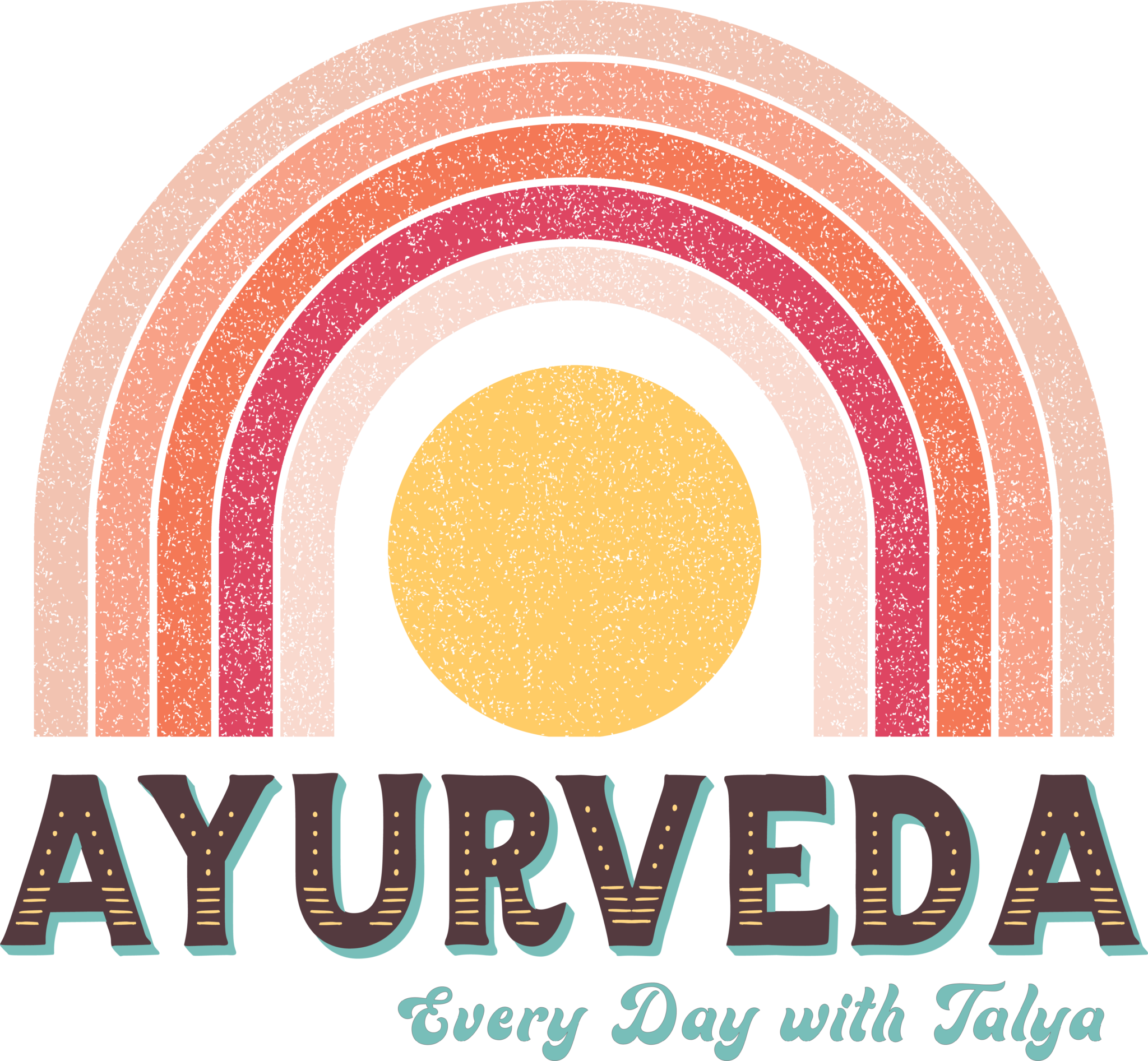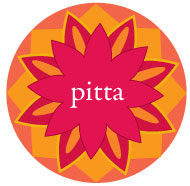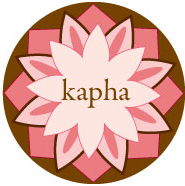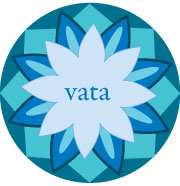
Is Kefir The New Yogurt? Why We Love Kefir Benefits [+ Recipes]
There are so many reasons to be in love with kefir benefits! You can make so many probiotic-rich recipes that take kefir’s nutrition status to new heights. Check it out!
1. Kefir Vs. Yogurt
Did you know? Kefir is a probiotic superfood that, here at Ayurveda Every Day With Talya, we love to add to our Ayurvedic breakfasts! In fact, I encourage my Ayurveda students to turn to kefir whenever yogurt is too thick or heavy on their digestion.
Kefir is a lot like yogurt in terms of flavor and probiotic content. It’s a light, thin, yogurt-like drink that cools the body, soothes the digestive tract, and refreshes the mind.
Both are cultured sour in taste and, like yogurt, kefir is much more digestible than non-cultured dairy foods. Either one is made from cow, goat, or sheep’s milk and other plant-based kinds of “milk.” However…
What sets kefir apart is how light it digests and how easily it can be incorporated into delicious, health-giving recipes.
Because kefir is fluid in nature (while yogurt is more solid), kefir is much lighter on the body and easier for the digestive system to absorb and assimilate. When you add warming spices to kefir, you’ve got a cultured dairy product that’s tridoshic and packed with health benefits.
Plus, progressive companies like Lifeway Kefir think about health-conscious foodies who don’t eat dairy. They make high quality, plant-based kefir alternatives that are super delicious and still rich in probiotics.
2. Kefir Health Benefits
One of the primary benefits of kefir is that it comes supplied with a wealth of food-based probiotics. A building block of long-term hydration, probiotics are essential for enhancing the colon’s beneficial bacteria. They cultivate a healthy mucin lining (i.e. mucosal health) from top to bottom of the digestive tract.
Probiotics contribute to your total health, optimal digestion, and immunity!
When you get probiotics from live, cultured foods like kefir, studies show that gastrointestinal disorders (including leaky gut) can repair.
The key is to take high-quality, restorative probiotics on a consistent basis – along with an Ayurveda-appropriate diet – and watch them do their magic.
Something I love about Lifeway Kefir is their unique fermentation process and specific kefir cultures. Their kefir is up to 99% lactose-free and suitable for most people who deal with lactose intolerance.
Kefir’s also packed with protein, alpha hydroxy acid (AHA) that’s good for the skin, tryptophan (an amino acid that helps raise serotonin levels in the brain), and whole-food sourced calcium.

3. Kefir as an Ayurvedic Home Remedy
As an Ayurvedic home remedy, kefir is absolutely amazing for nourishing the Vata dosha.
Vata is the elemental force comprised of air and ether. Cold, light, and dry in nature, Vata is like the wind. It comes up for everyone in fall – the Vata season – and requires moisture, warmth, and grounding qualities to keep it in balance.
When paired with warming spices, enzymatic fruits, and other warming accompaniments, kefir is awesome for this very reason!
Kefir is primarily sour – a taste in Ayurveda that warms the body and promotes healthy elimination. Kefir’s long-term effect on the body is extremely nutritive – nourishing, building, and grounding (all the things Vata needs).
That being said, it can aggravate the other doshas – Pitta and Kapha.
Yet when you pair kefir with the right ingredients, any dosha can benefit from eating it.
4. How To Enjoy Kefir With Ayurveda In Mind
Kapha can pair plain or plant-based kefir with light and warming spices such as ginger, turmeric, cinnamon, and black pepper. Sounds a lot like golden milk, doesn’t it? Yes, it does. Warm that up over low heat and you’ve got a probiotic, energizing drink that will get Kapha moving.
Similarly, Pitta can pair kefir with sweet, juicy fruits like mango – or, astringent fruits like pomegranate and cranberry – and reap the benefits of a drink that’s cooling, soothing, and balanced for a fiery constitution. Add some fresh mint leaves or ground coriander to the mix and you’re doing even better.
Eating Ayurvedically helps you feel energized, balanced, and nourished. It’s a way of eating that’s tailored to YOUR unique body type and any particular imbalances you’re working with.
Ayurveda shows you how to nurture your body’s specific needs day-by-day, moment by moment. When you eat true to your Ayurvedic nature, you tend to eat less but feel more satisfied because what you eat is truly nourishing you.
Speaking of nourishment… Ayurveda believes all dis-ease begins in the gut. So the food you eat really is your best medicine. To learn more about Ayurveda and how to apply it to your body and your life, download my Ayurveda Starter’s Guide!
5. Kefir Recipes

Ayurvedic Rosewater Lassi
VP-K+
Preparation Time: 5 minutes
Yield: Serves One
½ cup Lifeway Whole Milk Kefir, any flavor
2 ounces rose water
1 Tablespoon vanilla protein powder, optional
2 Medjool dates
½ teaspoon ground cardamom
1 teaspoon ground ashwagandha, optional
Put all the ingredients in a blender and process until smooth. This probiotic-rich digestive drink strengthens your vitality and gut health.
In Ayurvedic medicine, India’s holistic health care system, this recipe is hydrating, moistening, and strengthening.

Creamy Zucchini Soup
VP-K=
Preparation Time: 45 minutes plus chill time
Yield: Serves 6 to 8
2 Tablespoons ghee
1 teaspoon whole cumin seed
½ teaspoon whole mustard seed
1 cup chopped leek or green onion
4 cloves garlic, minced
4 medium zucchini, chopped
1 teaspoon good quality mineral-rich salt
8 cups bone broth or vegetable broth
1 cup toasted pine nuts, walnuts or pecans
2/3 cup whole, plain, whole milk kefir – dairy or plant-based
¼ teaspoon lemon zest, optional
½ teaspoon ground black pepper
¼ cup fresh basil leaves, chopped
Olive oil for garnish
In a medium saucepan over medium heat, melt the ghee and toss in the cumin and mustard seeds. Once the seeds pop, add the leek and stir until they become soft about 5 to 6 minutes. Add the garlic, cook for one more minute, then stir in the zucchini and salt. Stir occasionally and cook until the zucchini softens about 10 minutes.
Add the broth, cover and reduce heat to simmer. Cook until the zucchini is completely tender, around 20 minutes. Turn off the heat and let the soup cool completely. Transfer the zucchini to the refrigerator uncovered and leave until it’s completely cool. Chop ¼ cup of the pine nuts and set aside.
Put the remaining nuts, yogurt, optional lemon zest, black pepper and chilled zucchini in a blender or food processor – you may need to do this in a couple of batches – and process until smooth. Salt to taste. Garnish each serving with a smattering of the chopped nuts, basil and at least 1 to 2 teaspoons olive oil. So delicious!

Winter Squash Pie
V-P+K=
Preparation Time: 45 minutes
Yield: One 9-inch pie
For The Pie:
2 cups cooked winter squash – acorn, butternut, or pumpkin
1 cup Lifeway Organic Whole Milk Kefir or Lifeway Coconut-Vanilla Plantiful
½ cup maple syrup
2 Tablespoons molasses
2 Tablespoons coconut sugar
3 whole organic eggs
1 Tablespoon ground cinnamon
1 teaspoon ground ginger
1 teaspoon ground cardamom
½ teaspoon ground clove
¼ teaspoon ground nutmeg
To Make The Gingersnap Crust:
½ cup raw almonds
4 Medjool dates, pitted and roughly chopped
1 cup gingersnap cookies, crumbled or ginger granola
4 Tablespoons room temperature ghee
2 teaspoons fennel seed
½ teaspoon ground cinnamon
¼ teaspoon high quality, mineral-rich salt
Preheat the oven to 375 degrees. Put 1 cup of water in the base of a long, shallow pan and set aside. Cut the squash in half lengthwise and remove the seeds. Place the two squash halves face down in the pan and bake until the squash is soft and fork-tender about 40 minutes.
Meanwhile, prepare the Gingersnap Crust. Use a food processor to grind the almonds into flour. Add the gingersnap cookies and process until roughly ground. Add the dates, ghee, fennel seed, cinnamon, and salt. Pulse until combined but not over-mixed. Press the crust into a ghee-greased 9-inch baking dish and set aside.
Remove the squash from heat and let cool for 10 minutes. Reduce the oven heat to 350 degrees. Remove the skins and puree in a high-speed blender or food processor with all the remaining ingredients. Pour the mixture into the Gingersnap Crust and bake at 350 degrees for 45 minutes. Serve with Original Lifeway Frozen Kefir and a dash of black pepper.
Do you love Ayurvedic nutrition and health-conscious recipes that make you feel fabulous?!
Then stick with me! Go here to grab my Ayurveda Starter’s Guide and click here to learn about The RAD Cleanse – my seasonal Ayurveda detox program that doubles as my most comprehensive course on Ayurvedic nutrition and nourishment.
Thanks so much for reading!







